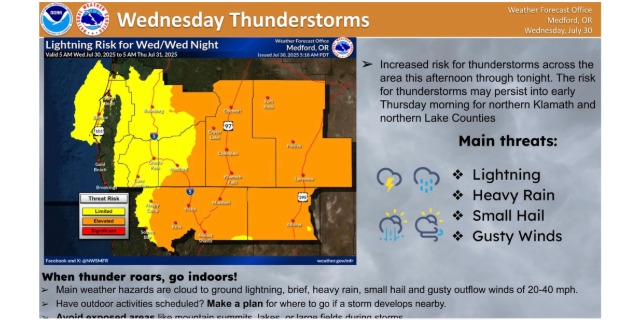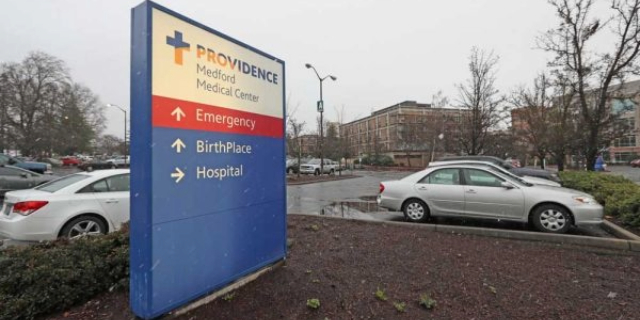LATEST: Tsunami advisory canceled for Oregon Coast, but officials urge caution
Published 9:25 am Wednesday, July 30, 2025

- Cars are at a standstill along the Pan-American Highway in Panama City, Wednesday, July 30, 2025, following a tsunami warning after a earthquake struck off the coast of Russia early Wednesday. (AP Photo/Matias Delacroix)
Update: 11:06 a.m.: The tsunami advisory is canceled for the coastal areas of Oregon and Washington from the Oregon California Border to the Washington border. However, (the Oregon Department of Emergency Management) is still urging visitors to the coast to exercise cuation as large debris washes ashore during the next few days. This is also a good time for people to reflect on their tsunami preparedness plans and learn their evacuation routes and warning levels.
Update 10:38 a.m.: Oregon officials want residents to be wary of coastal conditions following Tuesday’s earthquake in Russia.
“The Oregon Department of Emergency Management (OEM) is urging residents and visitors along the Oregon Coast to use caution following a Tsunami Advisory issued by the National Tsunami Warning Center. The advisory follows a magnitude 8.8 earthquake that occurred near the Kamchatka Peninsula, Russia, on July 29, 2025, at approximately 4:25 p.m. (PST),” a news release said.
Trending
“Small tsunami waves — the largest being between 1 to 2 feet in height — reached parts of the Oregon coast last night starting at around 11:50 p.m. on July 29, 2025. Although this is not a major tsunami, hazardous conditions including dangerous currents and strong wave action remain possible in coastal and harbor areas. At this time there have been no major damages or injuries reported to OEM from local municipalities.”
Areas potentially affected include:
- Port Orford
- Charleston
- Brookings
- Newport
- Seaside
See previous coverage below
Authorities across the U.S. and Asia lifted evacuation orders and downgraded warnings after a powerful earthquake in Russia’s Far East triggered a tsunami that rippled across the Pacific.
Four-foot waves (1.2-meter) were recorded in Hawaii, with smaller waves hitting coastal areas of California, Oregon and Indonesia. Alerts in Hawaii and Japan were downgraded — allowing evacuees to return home — and warnings in Shanghai were canceled, but authorities cautioned that waves would continue to hit coastlines throughout the day.
“Everything has been OK so far, we haven’t seen a big wave,” Hawaii Governor Josh Green said earlier on Wednesday. Water was seen receding from the coastline, which can be a sign of an imminent tsunami, and “we expect two to three hours at least until we can call all clear,” he said.
Trending
The tsunami won’t have a “disastrous impact” on China’s coastal areas, Xinhua News Agency reported, citing the National Marine Environmental Forecasting Center.
The magnitude-8.8 quake struck at a depth of 21 kilometers off Russia’s Kamchatka Peninsula on Wednesday morning local time, triggering tsunami alerts from Japan and China to the U.S. and Canada, and as far away as Indonesia and New Zealand. An earthquake of that scale marks the strongest worldwide since 2011, according to recent data from the U.S. Geological Survey, and the most powerful in Russia since 1952.
The quake likely came from a shallow undersea “mega-fault,” said Rebecca Bell, a professor of tectonics at Imperial College London. “These are the largest faults on Earth and are capable of hosting the largest earthquakes,” she said.
Japan has seen minimal impact so far. The Japan Meteorological Agency downgraded all of its tsunami warnings to advisories, signaling lower risk, but prime Minister Shigeru Ishiba urged residents in affected areas remain on alert. “It’s possible that the second, third and fourth waves of tsunami could be much bigger” than the first, he said.
Japan is no stranger to tsunamis. In 2011, it was hit by a magnitude-9 quake off the northeastern coast, triggering waves of nearly 40 meters that destroyed coastal cities and claimed more than 20,000 lives. The waves overwhelmed Tokyo Electric Power Co.’s nuclear power plant in Fukushima, which resulted in a power failure and subsequent meltdown at the plant.
On Wednesday, NHK switched from normal programming to show information about the warning and initially urged people to flee from the shore. The broadcaster showed cars heading away from coastal areas in Matsushima in Miyagi prefecture, northern Japan. Sendai Airport, located in Miyagi, suspended flights and urged travelers to evacuate to the second floor of the terminal building.
Wednesday’s earthquake was big enough to displace “a huge amount of water, and usually that size does make it to the other side of the Pacific,” said Lucy Jones, a seismologist at the California Institute of Technology. Tsunamis travel 500 to 600 miles per hour, about the cruising speed of a Boeing 747, she said.
In Russia, near the epicenter of the earthquake, waves as high as 4 meters were observed and a town of 2,400 people was flooded in the Northern Kuril islands, according to media. No injuries were immediately reported.
Evacuations ordered in South America
Chile, a place highly vulnerable to earthquakes and subsequent tsunamis, raised its warning early Wednesday to the highest level for most of its lengthy Pacific coast and said it was evacuating hundreds of people.
“Remember that the first wave is usually not the strongest,” Chilean President Gabriel Boric warned on social media. “Let’s act calmly and follow official instructions.”
Colombian officials ordered the complete closure and evacuation of beaches and low-tide areas while maritime traffic was being restricted.
Education officials in Ecuador canceled classes at schools in the Galapagos Islands as well communities along the coast.








